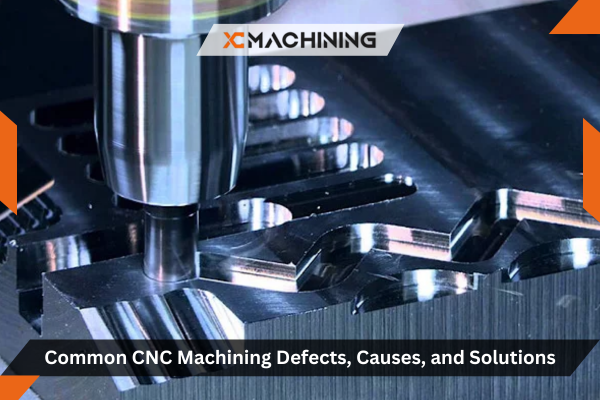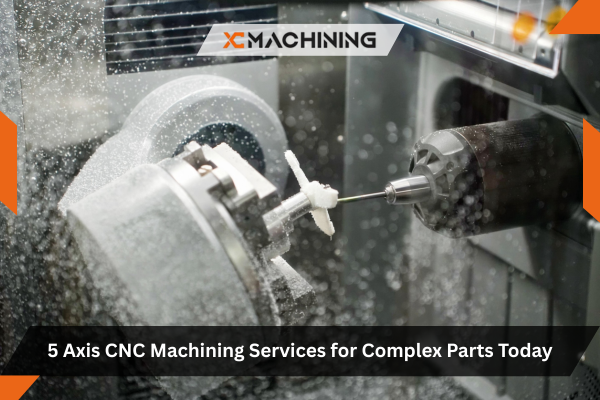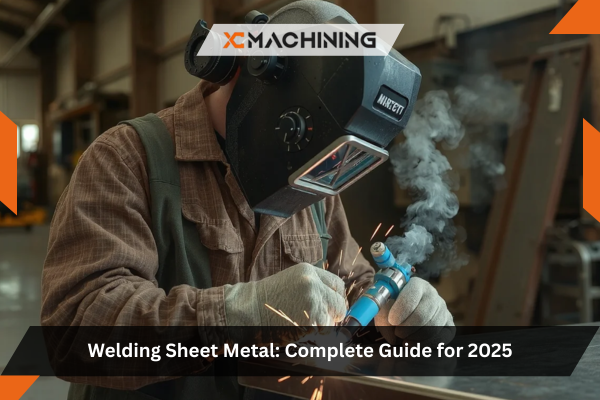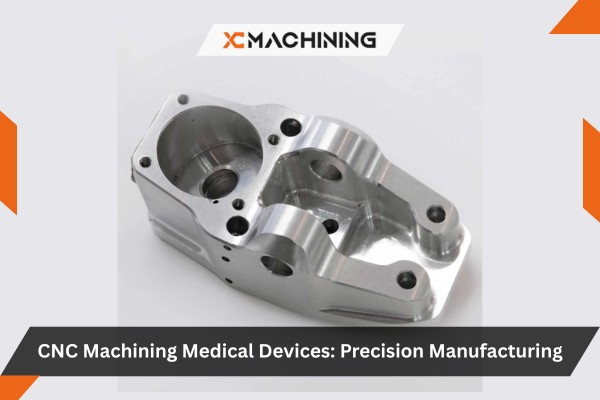Why Do Common CNC Machining?
Even the most advanced CNC machining require optimal conditions to perform flawlessly. Defects occur when any part of the workflow—hardware, software, tools, or materials—is out of balance.
Primary causes of defects include:
- Machine misalignment or wear over time
- Tool degradation or incorrect tool type
- Programming mistakes, such as incorrect G-code
- Material inconsistencies (density, hardness, impurities)
- External conditions like temperature shifts or vibration
A single overlooked detail can compromise the entire machining process. Regular monitoring, maintenance, and analysis are necessary to ensure each element functions correctly.
Table of Contents
Surface Finish Defects
Symptoms: The final product surface appears rough, wavy, or scratched instead of smooth and consistent.
Causes:
- Dull or worn cutting tools reduce the sharpness needed for clean cuts
- Incorrect feed rate and spindle speed settings can cause tool chatter or poor contact
- Vibration due to poor fixturing or unstable machine components leads to irregular cuts
- Low-quality raw material can chip or tear instead of cutting cleanly
Solutions:
- Replace or re-sharpen cutting tools at appropriate intervals
- Use recommended cutting parameters based on material specifications (refer to tooling charts from manufacturers like Sandvik Coromant: https://www.sandvik.coromant.com)
- Stabilize workpieces with proper fixturing techniques to reduce movement
- Choose high-grade materials known for machinability to ensure smoother finishes
Addressing machining surface finish defects at the source prevents additional processes like polishing or grinding, saving time and cost.
Dimensional Inaccuracies
Symptoms: Finished parts fall outside specified tolerances, causing assembly failures or rejected products.
Causes:
- Tool deflection during machining due to excessive cutting force
- Thermal expansion in machine components causes length variations
- Incorrect tool offsets in the CNC controller
- Backlash or mechanical wear in machine axes
Solutions:
- Reduce tool overhang and use stiffer tool holders to limit deflection
- Implement thermal stabilization techniques, such as controlled coolant application
- Recalibrate machines routinely and verify tool offsets before each run
- Inspect ball screws and slides for backlash and replace worn components
To reduce CNC dimensional errors, dimensional verification should be performed with precision instruments like CMMs (Coordinate Measuring Machines). Reliable accuracy is essential for tight-tolerance parts.
Burr Formation
Symptoms: Sharp, unwanted projections or edges form at the boundary of a machined surface.
Causes:
- Dull cutting edges create tearing instead of clean shearing
- Excessive tool engagement or high feed rates push material outward
- Inadequate clearance angle or wrong tool path during finishing passes
Solutions:
- Employ deburring tools, chamfering passes, or abrasive finishing methods
- Optimize feed rates and tool geometries for cleaner material removal
- Select proper tools designed for burr reduction in specific materials (see Kennametal’s tool recommendations: https://www.kennametal.com)
CNC machining problems like burrs not only reduce aesthetic quality but also affect part fit and safety. Eliminating them improves functionality and minimizes post-processing.
Tool Wear and Breakage
Symptoms: Decreasing tool life, inconsistent cut quality, or complete tool failure during machining.
Causes:
- Excessive heat generated during cutting degrades the tool material
- Incorrect tool material selection for the specific job
- Improper cutting parameters (too fast or too slow)
- Ineffective chip evacuation, causing re-cutting of the material
Solutions:
- Use tools with advanced coatings like TiAlN for heat resistance
- Select tool materials based on part material hardness and abrasiveness
- Calibrate spindle speeds and feed rates to the tool manufacturer’s recommendations
- Ensure clean chip evacuation using compressed air or high-pressure coolant systems
Preventing CNC tool wear issues helps maintain part quality and reduces unplanned downtime. Monitoring tool condition using digital wear sensors or visual inspection ensures timely replacement.
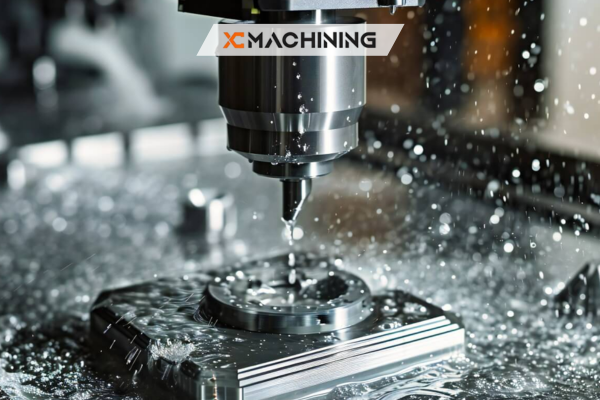
Chatter and Vibration Marks
Symptoms: Wavy surface patterns, inconsistent dimensions, and audible noise during machining.
Causes:
- Resonance between the machine spindle and the cutting tool
- Unstable setup due to insufficient workholding
- Tool imbalance or wear affecting dynamic stability
Solutions:
- Adjust spindle speeds away from natural frequency points (use stability lobe diagrams)
- Reinforce fixtures or switch to vacuum or magnetic holding for better support
- Use balanced tools and tool holders to minimize vibration
Chatter is one of the most difficult CNC machining problems to detect early, but its impact on quality is significant. Noise analysis tools and machine monitoring systems can help detect vibration in real time.
Overcutting or Undercutting
Symptoms: Parts are machined smaller (overcut) or larger (undercut) than specified dimensions.
Causes:
- Toolpath programming errors or outdated G-code
- Backlash in machine drives or worn ball screws
- Tool deflection due to insufficient rigidity
Solutions:
- Simulate toolpaths using CAM software before production (Autodesk Fusion 360 offers robust simulation tools: https://www.autodesk.com/products/fusion-360)
- Regularly check and adjust backlash compensation settings
- Use shorter and more rigid tools for deep cavities
To minimize CNC dimensional errors, it’s important to validate programs before machining and run trial cuts when possible.
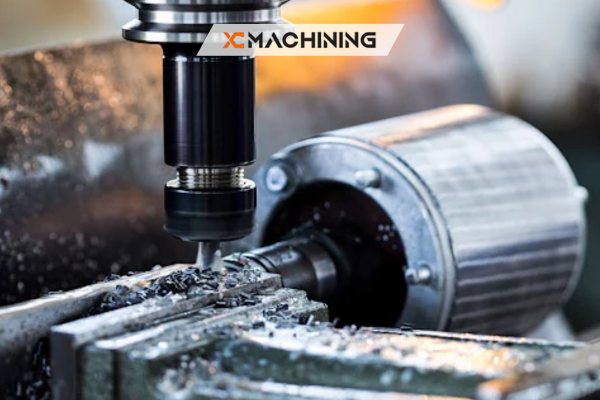
How to Prevent CNC Machining Problems
Preventive strategies can significantly reduce the occurrence of machining defects. A structured approach focusing on tools, machines, programming, and materials ensures reliability across production runs.
Key machining defect prevention practices:
- Conduct daily inspections and scheduled maintenance of machines
- Calibrate tool offsets and probe settings regularly
- Verify material grade and specifications upon delivery
- Simulate machining operations to catch toolpath or geometry issues early
- Track tool life using software to replace tools before wear limits are reached
- Train operators on recognizing the signs of tool failure and machine wear
Manufacturers like those in the automotive and aerospace sectors often implement Six Sigma and ISO-based quality systems to prevent issues and reduce variation.
Why Quality Control Matters
China is home to one of the largest manufacturing ecosystems globally, making quality control a critical differentiator in CNC services. Industries such as aerospace, electronics, and medical devices require consistent precision and reliability.
Avoiding common CNC Machining Defects is essential for:
- Reducing scrap and material loss
- Minimizing rework and labor cost
- Meeting tight production deadlines
- Ensuring customer satisfaction and repeat business
Leading manufacturers integrate smart sensors, IoT-based monitoring, and ERP systems to streamline defect tracking and response.
Frequently Asked Questions
What are the most common CNC machining problems?
The most frequent problems include burr formation, tool wear, dimensional inaccuracies, poor surface finishes, and vibration-related defects. Each of these issues stems from improper machining setup, worn tools, or programming errors.
How can I improve my CNC machining surface finish?
Use sharp tools, select appropriate cutting speeds, minimize vibration, and choose high-quality materials. Also, monitor tool wear and avoid excessive feed rates.
What causes CNC dimensional errors?
Dimensional errors are typically caused by tool deflection, thermal expansion, incorrect offsets, and machine wear. These can be mitigated by regular calibration and using precision instruments.
What is the best way to prevent machining defects?
A structured maintenance plan, regular calibration, proper tool selection, and advanced simulation software are key. Operator training and real-time monitoring also play a crucial role.
Conclusion
Detecting and resolving common CNC Machining Defects is vital for achieving high precision, reducing costs, and maintaining a competitive edge. Each issue, from surface finish flaws to tool breakage, can be addressed with specific, actionable strategies.
By understanding the root causes and applying proven solutions, manufacturers can enhance product quality, minimize delays, and achieve consistent performance in every production cycle. Industries operating in China’s high-demand sectors can especially benefit from streamlined, defect-free machining processes aligned with international standards.

